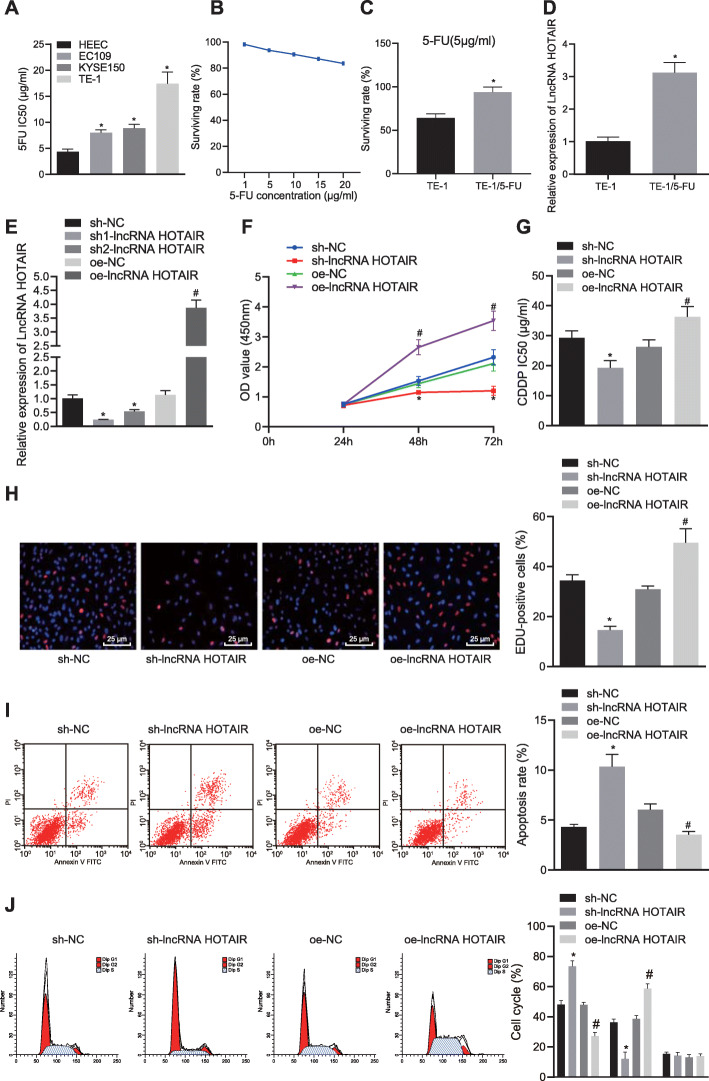Fig. 3.
Silencing of HOTAIR facilitates chemosensitivity to 5-FU and apoptosis and reduces the proliferation of EC cells. Two shRNAs were delivered into TE-1/5-FU cells to specifically blunt HOTAIR (sh1-lncRNA HOTAIR and sh2-lncRNA HOTAIR group). Expression vectors containing the lncRNA HOTAIR were introduced into TE-1/5-FU cells (oe-lncRNA HOTAIR group). Scramble shRNA-treated cells and empty vectors-treated cells served as negative controls (sh-NC group and oe-NC group). (a) CCK-8 assay was performed to test the sensitivity of EC cell lines to 5-FU. (b) CCK-8 assay was performed to assess the surviving rate of TE-1/5-FU resistant strain in response to different concentrations of 5-FU. (c) CCK-8 assay was performed to assess the surviving rate of TE-1 cell line and TE-1/5-FU cell line at a 5-FU concentration of 5 μg/mL. (d) RT-qPCR was performed to determine the lncRNA HOTAIR expression in TE-1 cells and TE-1/5-FU cells, normalized to GAPDH. (e) Silencing and overexpression efficiency in TE-1/5-FU cells detected using RT-qPCR, normalized to GAPDH. (f) CCK-8 assay was performed to detect TE-1/5-FU cell viability following HOTAIR alternations. (g) CCK-8 assay was performed to measure IC50 value in TE-1/5-FU cells following HOTAIR alternations. (h) EdU assay was performed to measure cell proliferation of TE-1/5-FU cells following HOTAIR alternations (× 400) (i) Flow cytometry was performed to assess apoptosis of TE-1/5-FU cells following HOTAIR alternations. (j) Flow cytometry was performed to assess cell cycle of TE-1/5-FU cells following HOTAIR alternations. Values obtained from three independent experiments in triplicate are expressed as mean ± SD and analyzed using ANOVA followed by Tukey’s post hoc test among three or more groups. *p < 0.05 compared with TE-1/5-FU cells treated with either sh-NC or oe-NC group

